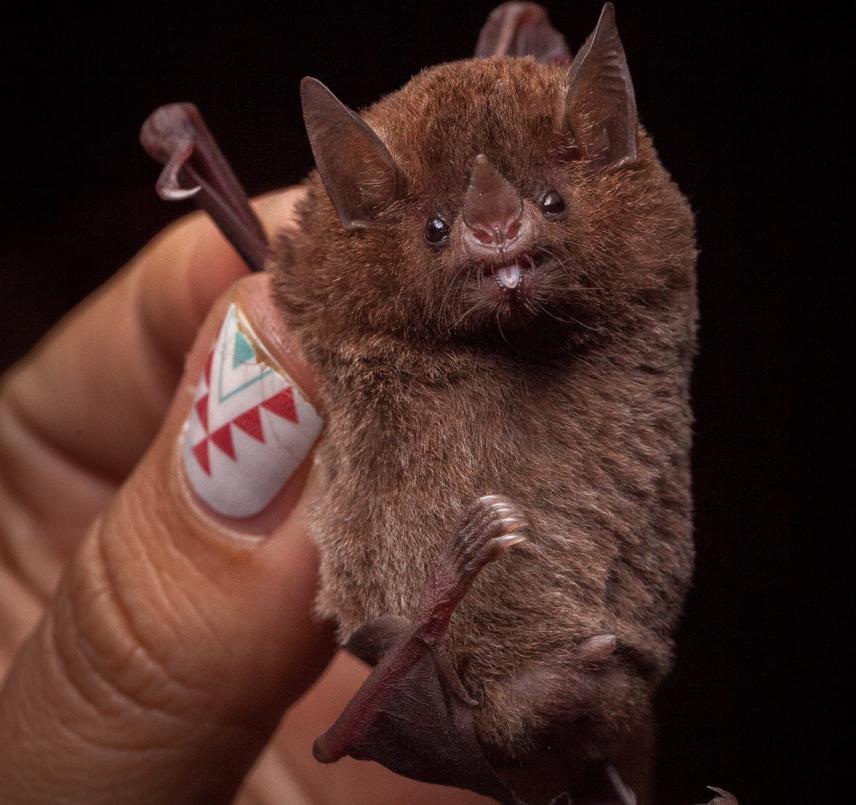Priscilla Alpízar
Other projects
27 Jan 2015
Diet, Gut Microbiome, Immune System-Feeding Bat in Intensive Banana Plantations in the Caribbean Costa Rican Lowlands
The principal aim of this study is to assess the effects that intensive banana plantations have on nectar- feeding bats by exploring the relations between habitat alteration, diet, gut microbiome and immune system condition. We want to explore the effects of agrochemicals on the animals’ gut microbiota and immune system, so we propose to compare bats feeding in conventional with those foraging in organic banana plantations. Since activity and movement patterns of our focal species are important for the interpretation of our findings, our final objective is to determine the home range and foraging areas of Glossophaga soricina within banana plantations.

Glossophaga soricina. ©Julian Schneider.
This project will provide a comprehensive insight into the dietary, physiological and immunological effects that the conversion of natural habitats to agricultural monocultures may have on local wildlife. We want to explore these associations in two contrasting habitats (forests vs. plantations) and in monocultures with different management (conventional vs. organic). To reach our goals, we are mist-netting bats during 22 months distributed in three sampling periods between 2015 and 2018. We are conducting our field work in the Costa Rican Caribbean lowlands, where 97.9% of the national banana production occurs. The study focuses on Glossophaga soricina, a small nectar-feeding bat that roosts in hollow trees and human-made structures.
From all captured G. soricina individuals, we have recorded morphological data and collected pollen, faecal, and blood samples. We collect pollen by rubbing fuchsine-glycerine gelatine in the bats’ hair, face, and membranes. Pollen samples are identified to genus or species level to determine G. soricina’s diet. Faeces, which will be used to describe the gut microbiome of this nectar-feeding bat, are stored in 96% ethanol at a -20°C freezer and will be analysed using Next-Generation Sequencing in the Institute of Evolutionary Ecology and Conservation Genomics in Ulm University. We analyse blood smears by counting leukocyte profiles to determine the bats’ immune system stress levels due to habitat alteration and agrochemical use. Furthermore, we take water and nectar samples from our study areas to have quantitative data about agrochemical concentrations in the dietary components of our focal species. Up to date, we have full sets of samples from 45 individuals in forests, 44 in conventional, and 73 in organic banana plantations. In addition to the original aim of our study, we now also want to determine the home and foraging range of G. soricina individuals captured in banana plantations using telemetry. We believe this will provide useful information for the interpretation of our findings, since it might reinforce data obtained from pollen samples about where the bats are flying to forage. A Masters student will be in charge of doing this during our third and final field session.
Throughout the entire fieldwork of our project, we have been in close contact with local communities and companies. We expect that, with their help, our results will develop into a long-term effort, which will include the creation of local conservation strategies to mitigate the effects that intensive monocultures have on bats and wildlife in general.